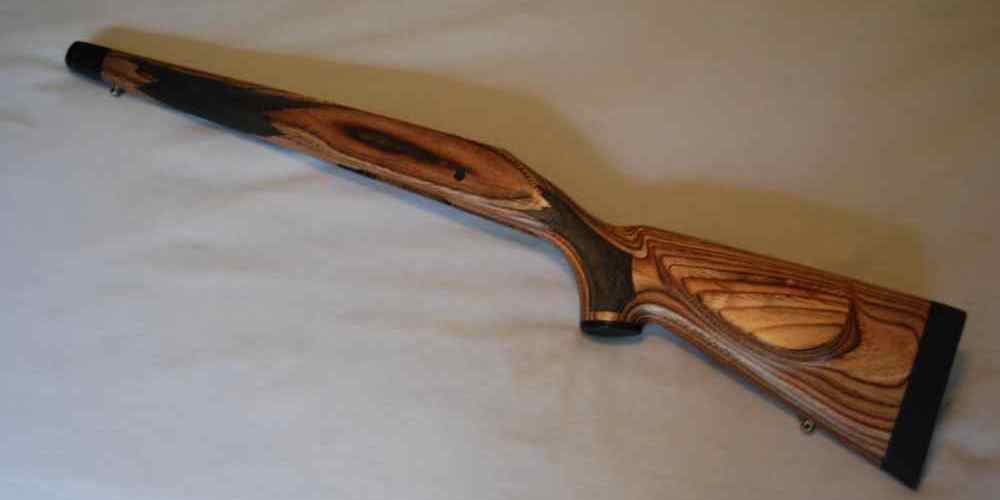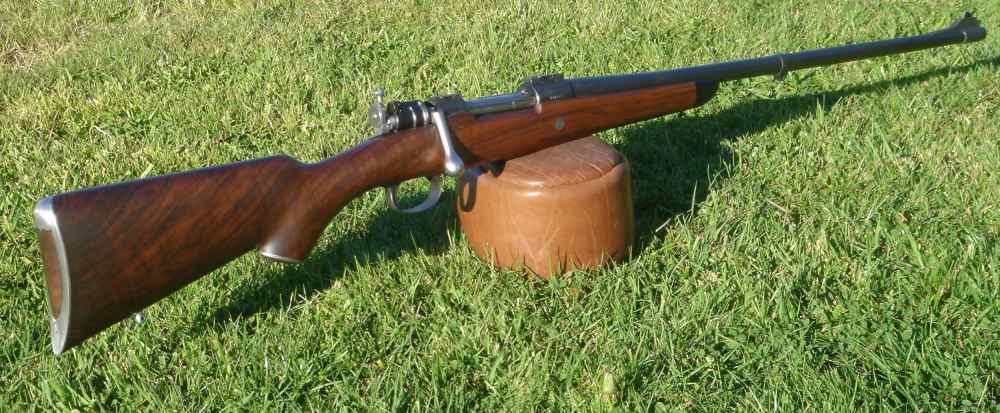“Precision at your fingertips: Fine-tune your rifle with adjustable gas blocks.”
Benefits of Using Adjustable Gas Blocks for Rifle Tuning
When it comes to fine-tuning your rifle for optimal performance, adjustable gas blocks are a game-changer. These small but mighty components allow you to adjust the amount of gas that is directed back into the rifle’s action, which can have a significant impact on the rifle’s recoil, reliability, and overall shooting experience.
One of the key benefits of using adjustable gas blocks is the ability to customize your rifle’s performance to suit your specific needs and preferences. By adjusting the gas flow, you can fine-tune the recoil impulse of your rifle, making it more comfortable to shoot and improving your accuracy. This level of customization is especially important for competitive shooters or hunters who rely on their rifles to perform flawlessly in high-pressure situations.
Another advantage of adjustable gas blocks is their impact on the reliability of your rifle. By adjusting the gas flow, you can ensure that your rifle cycles properly, even when using different types of ammunition or shooting in varying environmental conditions. This can help prevent malfunctions and jams, giving you peace of mind when you’re out in the field or on the range.
In addition to improving performance and reliability, adjustable gas blocks can also help extend the life of your rifle. By fine-tuning the gas flow, you can reduce the amount of stress and wear on your rifle’s components, potentially increasing its longevity. This can save you money in the long run by reducing the need for costly repairs or replacements.
Adjustable gas blocks are also incredibly versatile, allowing you to experiment with different settings to find the perfect balance for your rifle. Whether you prefer a softer shooting experience with less recoil or a more aggressive feel for faster follow-up shots, adjustable gas blocks give you the flexibility to dial in your rifle to your exact specifications.
Furthermore, adjustable gas blocks are relatively easy to install and adjust, making them a user-friendly option for shooters of all skill levels. With just a few simple tools and some basic knowledge of how gas systems work, you can quickly and easily fine-tune your rifle to suit your needs. This accessibility makes adjustable gas blocks a popular choice among hobbyists and professionals alike.
In conclusion, adjustable gas blocks are a valuable tool for anyone looking to optimize the performance of their rifle. From improving recoil control and reliability to extending the life of your rifle and providing versatility in customization, adjustable gas blocks offer a wide range of benefits that can enhance your shooting experience. Whether you’re a competitive shooter, a hunter, or just a firearms enthusiast, investing in an adjustable gas block is a smart choice that can take your rifle to the next level.
How to Install and Adjust Gas Blocks on Your Rifle
If you’re looking to fine-tune your rifle for optimal performance, adjustable gas blocks are a great tool to have in your arsenal. These handy devices allow you to adjust the amount of gas that is directed back into the action of your rifle, which can help improve reliability, reduce recoil, and even increase accuracy. In this article, we’ll walk you through the process of installing and adjusting an adjustable gas block on your rifle.

First things first, you’ll need to gather the necessary tools and materials for the job. You’ll need a set of Allen wrenches, a torque wrench, a vise block, and of course, the adjustable gas block itself. Make sure to read the manufacturer’s instructions carefully before beginning the installation process, as different gas blocks may have slightly different installation procedures.
Once you have everything you need, it’s time to get started. Begin by removing the handguard from your rifle, if necessary, and then use the vise block to secure the upper receiver in a vise. This will make it easier to work on the rifle and ensure that everything stays in place while you’re making adjustments.
Next, locate the gas block on your rifle. It is typically located near the front of the barrel, just behind the muzzle device. Use your Allen wrench to loosen the set screws that hold the gas block in place, and then carefully slide the old gas block off of the barrel.
Now it’s time to install the new adjustable gas block. Slide it onto the barrel in the same position as the old gas block, making sure that it is aligned properly with the gas port on the barrel. Tighten the set screws to secure the gas block in place, being careful not to over-tighten them.
With the gas block installed, it’s time to adjust the gas flow. Most adjustable gas blocks have a small screw or knob that can be turned to increase or decrease the amount of gas that is directed back into the action of the rifle. Start by turning the screw or knob all the way in one direction, and then slowly turn it back out until you find the optimal setting for your rifle.
To test the gas flow, load a few rounds of ammunition into your rifle and fire a few shots. Pay attention to how the rifle cycles and how it feels when you shoot. If the rifle is not cycling properly or if you are experiencing excessive recoil, you may need to adjust the gas flow further.
Continue making small adjustments to the gas flow until you find the perfect setting for your rifle. Once you are satisfied with the performance of your rifle, reassemble it and take it out to the range for some testing. You may find that your rifle shoots more accurately, cycles more smoothly, and recoils less with the adjustable gas block properly tuned.
In conclusion, adjustable gas blocks are a valuable tool for fine-tuning your rifle for optimal performance. By following the steps outlined in this article, you can install and adjust an adjustable gas block on your rifle with ease. Take the time to experiment with different gas settings to find the perfect balance for your rifle, and enjoy improved reliability, reduced recoil, and increased accuracy on your next shooting outing.
Best Practices for Fine-Tuning Gas Blocks for Optimal Performance
When it comes to optimizing the performance of your rifle, one key component to consider is the gas block. Adjustable gas blocks offer shooters the ability to fine-tune their rifle’s gas system for optimal performance. By adjusting the amount of gas that is allowed to cycle through the system, shooters can achieve better control over recoil, muzzle rise, and overall reliability.
One of the main benefits of using an adjustable gas block is the ability to customize the amount of gas that is used to cycle the action. This can be particularly useful for shooters who are using suppressors or shooting different types of ammunition. By adjusting the gas block, shooters can ensure that their rifle is cycling properly and reliably, regardless of the conditions.
Another advantage of adjustable gas blocks is the ability to reduce felt recoil and muzzle rise. By fine-tuning the gas system, shooters can achieve a smoother shooting experience and better control over their rifle. This can be especially beneficial for competitive shooters who need to make quick follow-up shots or for hunters who need to maintain accuracy over long distances.
When it comes to fine-tuning your rifle with an adjustable gas block, there are a few key factors to consider. First and foremost, it’s important to start with the manufacturer’s recommended settings and make small adjustments from there. It’s also important to keep track of any changes you make so that you can easily revert back to previous settings if needed.
When making adjustments to your gas block, it’s important to do so in a safe and controlled environment. Always ensure that your rifle is unloaded and follow proper safety protocols when making adjustments. It’s also a good idea to test your rifle after making adjustments to ensure that it is cycling properly and reliably.
In addition to reducing felt recoil and muzzle rise, adjustable gas blocks can also help improve the overall reliability of your rifle. By fine-tuning the gas system, shooters can ensure that their rifle is cycling properly and consistently, even in adverse conditions. This can be particularly important for shooters who rely on their rifle for self-defense or hunting purposes.
Overall, adjustable gas blocks offer shooters a valuable tool for fine-tuning their rifles for optimal performance. By adjusting the amount of gas that is allowed to cycle through the system, shooters can achieve better control over recoil, muzzle rise, and overall reliability. Whether you’re a competitive shooter, a hunter, or just someone who enjoys spending time at the range, adjustable gas blocks can help take your shooting experience to the next level. So why not give it a try and see the difference it can make in your shooting performance?
Comparing Different Types of Adjustable Gas Blocks for Rifles
When it comes to fine-tuning your rifle for optimal performance, adjustable gas blocks are a key component to consider. These devices allow you to adjust the amount of gas that is directed back into the rifle’s action, which can help improve reliability, reduce recoil, and enhance overall shooting experience. In this article, we will compare different types of adjustable gas blocks for rifles, so you can make an informed decision on which one is best for your needs.
One of the most common types of adjustable gas blocks is the screw-adjustable variety. These gas blocks feature a screw that can be turned to increase or decrease the amount of gas that is allowed to flow through the block. This type of gas block is relatively easy to adjust and offers a good level of control over the rifle’s gas system. However, some shooters may find it difficult to make precise adjustments with a screw-adjustable gas block, as small changes in the screw’s position can have a significant impact on the rifle’s performance.
Another popular type of adjustable gas block is the click-adjustable variety. These gas blocks feature a series of preset positions that can be selected by turning a dial or lever. This type of gas block offers a more user-friendly approach to adjusting gas flow, as shooters can easily switch between different settings without having to make fine adjustments with a screw. Click-adjustable gas blocks are ideal for shooters who want a quick and easy way to fine-tune their rifle’s gas system without the need for tools or complicated adjustments.
For shooters who want the ultimate level of control over their rifle’s gas system, an adjustable gas block with a bleed-off feature may be the best option. These gas blocks allow shooters to adjust both the amount of gas that is directed back into the action and the timing of when the gas is released. By bleeding off excess gas before it reaches the action, shooters can reduce felt recoil, improve reliability, and enhance overall shooting experience. While adjustable gas blocks with bleed-off features may be more expensive than other types of gas blocks, the level of control they offer can make them well worth the investment for serious shooters.
In conclusion, adjustable gas blocks are an essential tool for fine-tuning your rifle’s performance. Whether you choose a screw-adjustable, click-adjustable, or bleed-off gas block, each type offers its own set of benefits and drawbacks. By comparing different types of adjustable gas blocks for rifles, you can find the one that best suits your needs and preferences. So, take the time to research and test out different options to find the perfect adjustable gas block for your rifle. Happy shooting!
Troubleshooting Common Issues with Adjustable Gas Blocks on Rifles
Adjustable gas blocks are a valuable tool for fine-tuning your rifle’s performance. They allow you to adjust the amount of gas that is directed back into the action of the rifle, which can help improve reliability, reduce recoil, and optimize the cycling of the firearm. However, like any piece of equipment, adjustable gas blocks can sometimes present issues that need to be addressed.
One common issue that shooters may encounter with adjustable gas blocks is over-gassing. This occurs when too much gas is being directed back into the action of the rifle, causing excessive recoil and potentially damaging the firearm. If you find that your rifle is kicking too hard or cycling too quickly, it may be a sign that your gas block is set too high.
To address this issue, you can try reducing the amount of gas being directed back into the action by adjusting the gas block. Start by turning the adjustment screw counterclockwise to decrease the gas flow. Test fire the rifle after each adjustment to see if the issue has been resolved. It may take some trial and error to find the right setting, but once you do, you should notice a significant improvement in the rifle’s performance.
Another common issue with adjustable gas blocks is under-gassing. This occurs when too little gas is being directed back into the action of the rifle, causing the firearm to short stroke or fail to cycle properly. If you are experiencing failures to eject or failures to feed, it may be a sign that your gas block is set too low.
To address this issue, you can try increasing the amount of gas being directed back into the action by adjusting the gas block. Start by turning the adjustment screw clockwise to increase the gas flow. Test fire the rifle after each adjustment to see if the issue has been resolved. Again, it may take some trial and error to find the right setting, but once you do, you should notice a significant improvement in the rifle’s performance.
In some cases, shooters may find that their adjustable gas block is not functioning properly. This could be due to a variety of factors, such as a clogged gas port or a faulty adjustment screw. If you suspect that your gas block is not working correctly, it may be necessary to disassemble the block and clean or replace any damaged components.
When disassembling an adjustable gas block, be sure to follow the manufacturer’s instructions carefully to avoid causing any damage to the block or the rifle. Inspect each component for signs of wear or damage, and replace any parts that appear to be faulty. Once you have reassembled the gas block, test fire the rifle to ensure that it is functioning properly.
Overall, adjustable gas blocks are a valuable tool for fine-tuning your rifle’s performance. By addressing common issues such as over-gassing, under-gassing, and malfunctioning gas blocks, you can optimize the cycling of your firearm and improve its reliability. With a little patience and some trial and error, you can ensure that your rifle is performing at its best.





